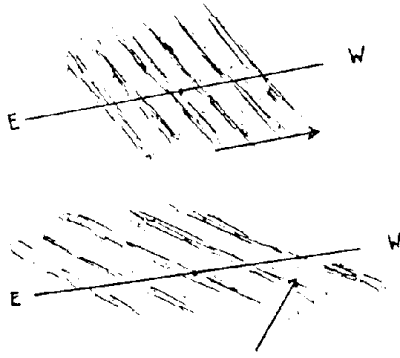 |
Science Frontiers ONLINE No. 123: May-Jun 1999 |
|
|
Eclipse Shadow Bands
E. Strach had the good fortune to have camcordered those elusive eclipse shadow bands that flit across the ground just before and after total solar eclipses.
The time was February 26, 1998; the place, Knip Beach, Curaco. Strach had first laid out a 53-centimeter-diameter white screen on the ground. He pointed his camcorder at the screen and pressed the ON switch 4 minutes before second contact.
Playing back his recording, he was not a little surprised to find he had an excellent record of the curious parade of the hard-to photograph dark bands.
"They were clearly seen for 32 seconds before the second contact and a little fainter for 27 seconds after totality. They moved rapidly across the screen from E to W before totality and from NNE to SSW after 3rd contact. Slow motion studies of the video show occasional merging of the bands and at times they seem to move in opposite directions -- probably a stroboscopic effect."
The widths of the bands varied from 2.36 to 6.63 centimeters.
(Strach, Eric; "Shadow Bands Recorded at February 26 Eclipse," British Astro nomical Association, Journal, vol. 108, 1998.
Comment. Theorists have long been challenged by these ghostly, fleeting shadows. Their widths change; their directions and speeds vary; they come in different colors; sometimes more than one set of bands appear; giant bands have been seen. All of these characteristics are difficult to account for in a single theory.
 | Shadow bands sketch during the February 26, 1998, total solar eclipse. (Top) before totality (Bottom) After totality |